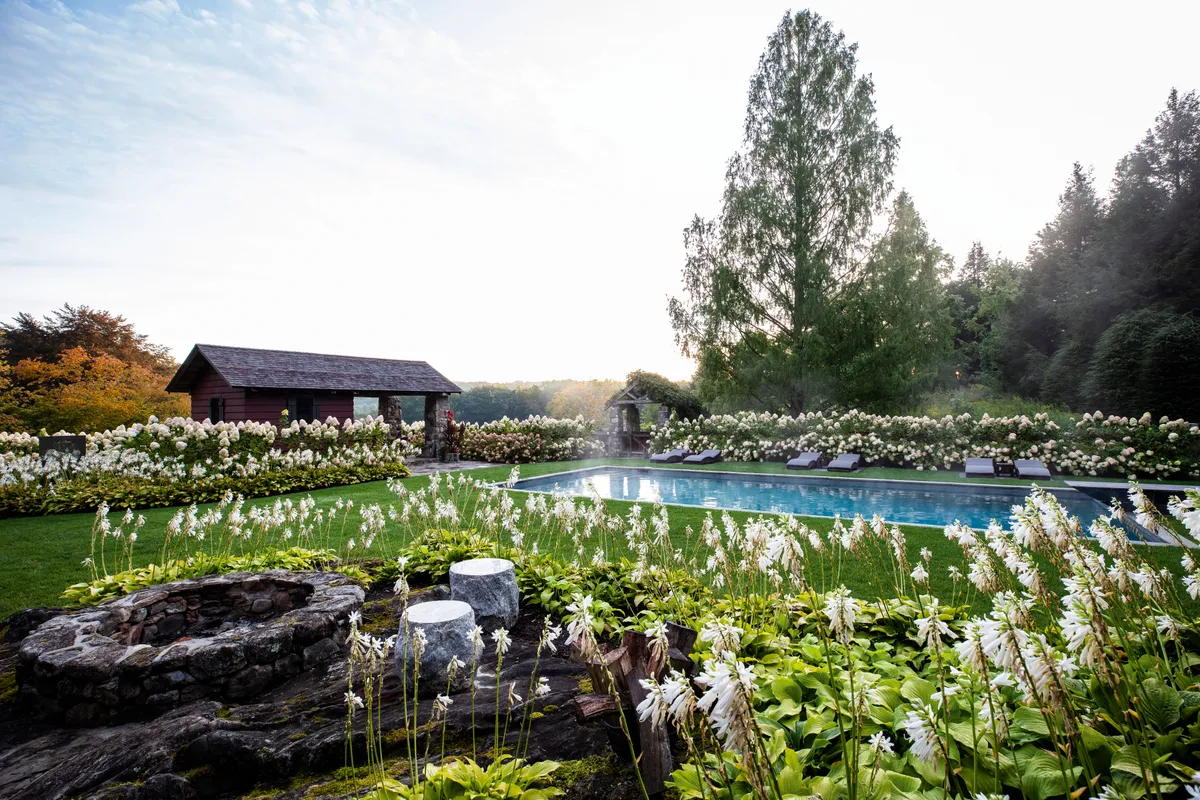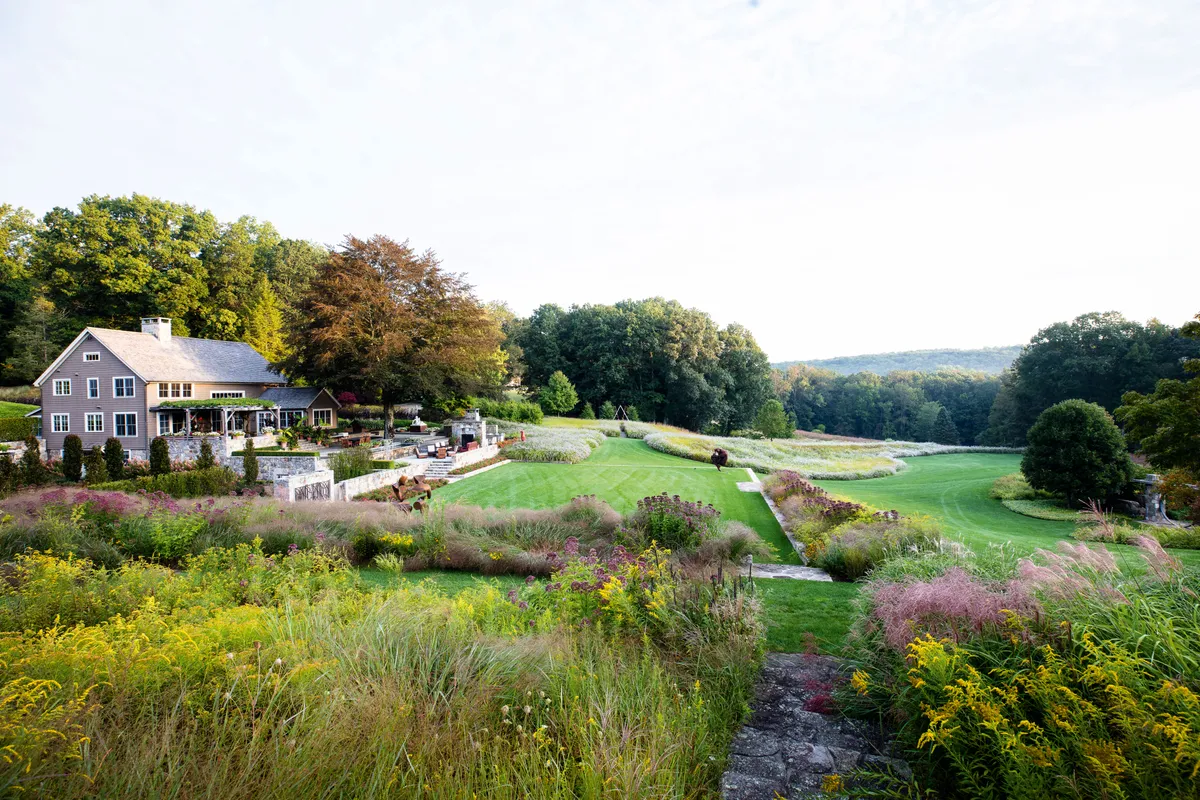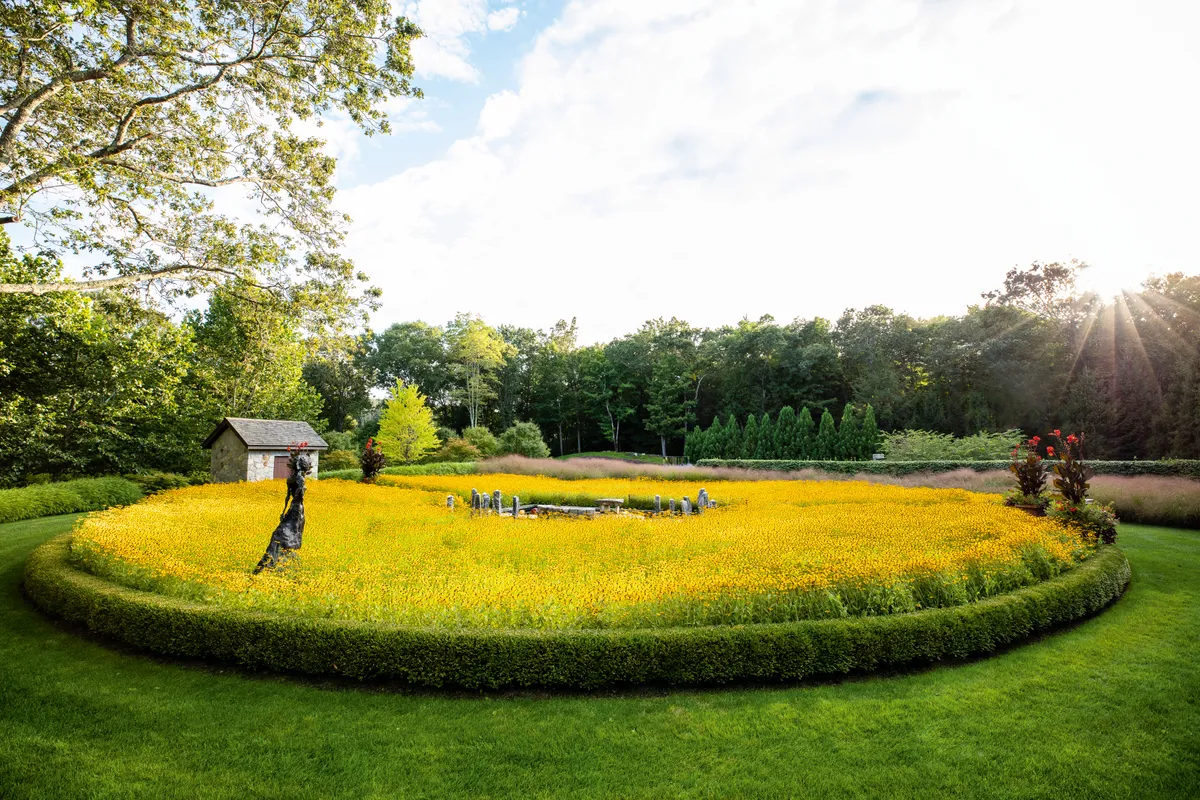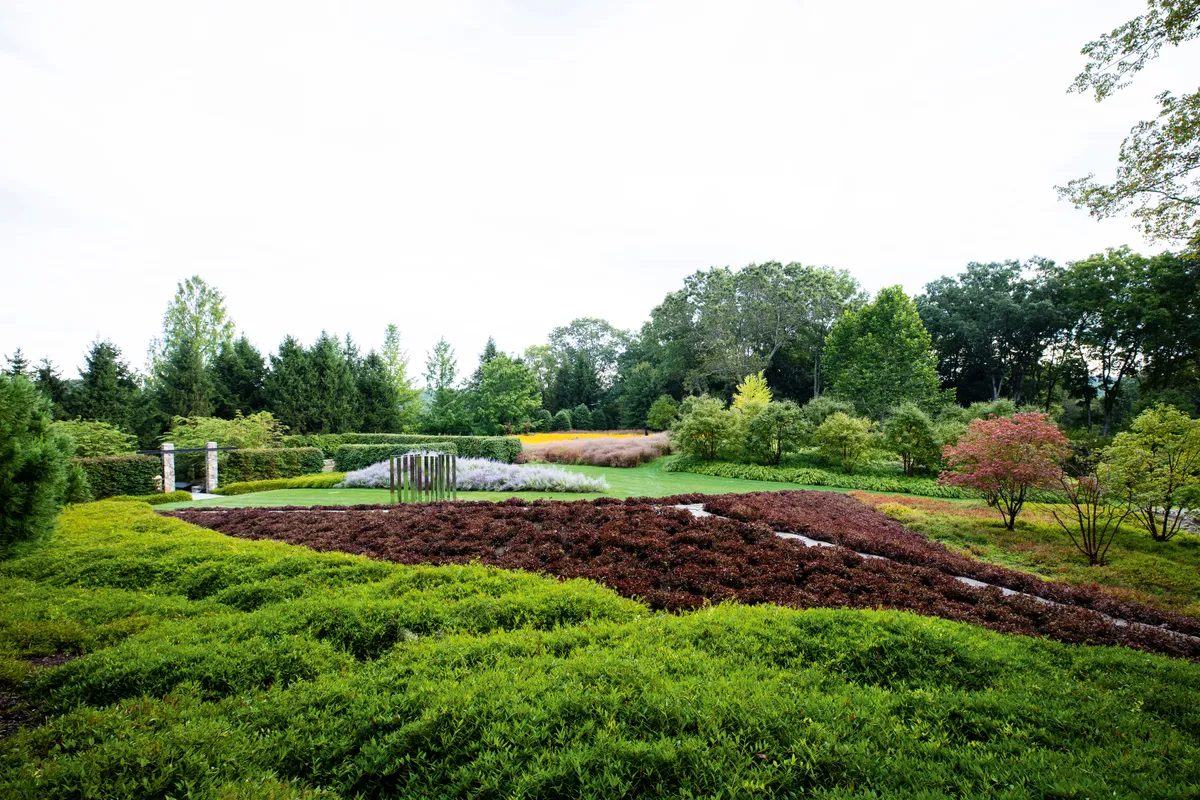As a design approach, the phrase ‘go big or go home’ would make sense for any eight-acre garden but it seems particularly fitting in the New England countryside. With harsh winters, and hot summers that are reliably humid, there is a smaller plant palette with which to work than in, say, northern Europe. When American garden designer Richard Hartlage of the Seattle-based design practice Land Morphology finds plant cultivars that thrive in this climate, he plants them by the thousand.

Overlooking the rolling hills of southwestern Connecticut, this sculpture-collector’s garden has a sense of panache in its planting that stands up to the wider setting. Between the swimming pool and the house, a native meadow is bisected by stone steps and grass paths, part of a pattern of swathes and swags that occurs all around the garden, in paths but also in waves of perennials and woody shrubs. “I learned that pattern from my reading of Gertrude Jekyll; long swathes of plants always look good at a distance because you get these layers when they’re perpendicular to the view,” says Richard, adding that planting this way brings an extra dynamism: “It gives an incredible movement in the landscape, and draws the eye out.”
In brief
Name InSitu. What Large country garden with views over rolling hills, developed over 13 years. Where Connecticut, USA. Size Eight acres. Soil Fertile clay, with rocks. Climate Hot and humid summers, long periods of snow in winter. Hardiness zone USDA 6a.
The reference to Miss Jekyll, doyenne of Arts and Crafts landscapes, is on point since Richard was initially called in by the garden owner to help resolve a sunken garden, which soon led to another section, and then another. The property is not compartmentalised by what we think of as ‘garden rooms’ but each informally delineated area has its own character. In common with the Arts and Crafts ethos, the use of local, hand-hewn materials brings a strong sense of unity, with arbours made from white pine that was sourced and planed at a small sawmill in the vicinity, and stairs and holding walls making use of the property’s abundance of rocks.

Nestled under an old copper beech, the New England-style house (built in the 1950s) sits above the ‘tent lawn’, which was terraced for entertaining. In the foreground, stone steps descend through cultivars of native plants, including Solidago rugosa ‘Fireworks’, Eupatorium dubium ‘Little Joe’ and a mid-height grass, Panicum virgatum ‘Rehbraun’.

The garden was developed over 13 years, one section at a time. It has an Arts and Crafts vernacular, with structures of locally sourced wood and on-site stone amid the mostly native planting. An avenue of columnar Liquidambar styraciflua ‘Slender Silhouette’ gives some perspective to the scale of several fine old (non-native) dawn redwoods (Metasequoia glyptostroboides).

In the sunken garden a narrow pathway, punctuated by artworks, is lined with fastigiate Fagus sylvatica ‘Dawyck Purple’. Hydrangea paniculata Pinky-Winky (= ‘Dvppinky’), which blooms after the Hemerocallis ‘Rosy Returns’ at its feet, faces Rosa Sunny Knock Out (= ‘Radsunny’), one of a group of shrub roses “wildly popular” in the USA. Above, an arbour supports rambling Rosa ‘Excelsa’.

Swathes of plants that do well in this part of New England are used to dramatic effect in the pool garden. Surrounding a stone firepit, Hosta plantaginea f. grandiflora, which is fragrant when in bloom, is joined by Hydrangea paniculata ‘Grandiflora’.

Richard used more than 2,500 Rudbeckia fulgida var. deamii plants to create a perfect circle of yellow surrounding one of the garden’s many water features. Framed by a low hedge of Buxus sinica var. insularis ‘Wintergreen’, this block of colour provides a striking setting for the owner’s figurative artwork.

The bottlebrush flowers of dwarf fountain grass Pennisetum alopecuroides ‘Cassian’s Choice’ remain a buff pink for months, before the foliage turns to yellow-orange in autumn. It provides a good understorey for Nyssa sylvatica, seen repeated with Hakonechloa macra to the right. A stand of Taxodium ascendens (pond cypress) is silhouetted against the forest edge.

Richard favours woody plants and perennials for mass plantings. Stretching out like the shadow of a Concorde aeroplane, Weigela florida Spilled Wine (= ‘Bokraspiwi’) is flanked by mounds of contrasting Deutzia gracilis ‘Nikko’.

Dwarf bamboo Pleioblastus pygmaeus ‘Distichus’, which grows to no more than 50cm, forms an effective green carpet in a garden that has a lot of ground to cover. Through it rise a series of Japanese maples, planted partly for their autumn colour, which will be intensified by the fiery leaves on boughs of Nyssa sylvatica, stretching across the foreground.
